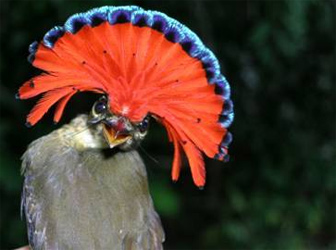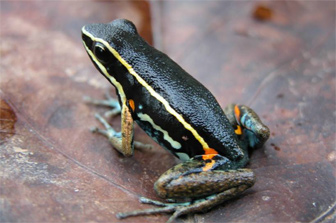In the Amazon, primary forest biodiversity tops that of secondary forest, plantations
In the Amazon, primary forest biodiversity tops that of secondary forest, plantations
Rhett A. Butler, mongabay.com
November 12, 2007
Plantations and secondary forests are no match for primary Amazon rainforest in terms of biodiversity, reports the largest ever assessment of the biodiversity conservation value in the tropics.
Writing in the current issue of the journal Proceedings of the National Academy of Sciences (PNAS), a team led researchers from the University of East Anglia (UEA) and Brazil’s Goeldi Museum found that 25 percent of all species were never found outside native primary forest habitat. For groups like trees, birds, leaf-litter amphibians, and lizards the percentage of species restricted to primary forest habitat was even higher at 40-60 percent. Still the researchers note their figures are likely underestimated.
“We know that different species often exhibit different responses to deforestation and so we sought to understand the consequences of land-use change for as many species as possible,” said lead author Dr Jos Barlow, a former post-doctoral researcher at UEA. “Our study should be seen as a best-case scenario, as all our forests were relatively close to large areas of primary forests, providing ample sources for recolonization. Many plantations and regenerating forests along the deforestation frontiers in South America and south-east Asia are much further from primary forests, and wildlife may be unable to recolonize in these areas.”
 Royal flycatcher. Photo by Jos Barlow |
The results are important given that more than 15 million hectares of forest were destroyed each year during the 1990s, while secondary forests have replaced one-sixth of all tropical primary forests that were felled during that time. Meanwhile, tropical forest plantations expanded by almost 5-fold since 1980.
The researchers say that while findings demonstrate the importance of conserving biologically rich old-growth forests, they also show that plantations and generating forests have higher levels of biodiversity than industrial soybean farms and cattle ranches.
“Although the protection of large areas of primary forest is vital for native biodiversity conservation, reforestation projects can play an important supplementary role in efforts to boost population sizes of forest species and manage vast working landscapes that have already been heavily modified by human-use,” said Dr. Carlos Peres, who leads the UEA team. Earlier this year the team published two studies showing that plantation forests and second-growth forests have lower species counts for butterflies, reptiles, and amphibians than adjacent primary forest areas.
 Poison arrow frog (Epipedobates hahneli). Photo by Toby Gardner |
Peres says the new study provides insight for policymakers looking at forests as a way to offset greenhouse gas emissions. While reforestation initiatives currently qualify for carbon credits, a new proposal known as Reduced Emissions from Deforestation and Degradation (REDD) would compensate countries that succeed in reducing deforestation rates. The framework offers great hope for saving the world’s remaining old-growth tropical forests.
“[It’s] far better to save primary forest from deforestation in the first place,” said Peres. “That way we maximize both the biodiversity and carbon value of whole landscapes.”
CITATION: Barlow, J. et al. Quantifying the biodiversity value of tropical primary, secondary, and plantation forests. Proceedings of the National Academy of Sciences. 12-November-2007














